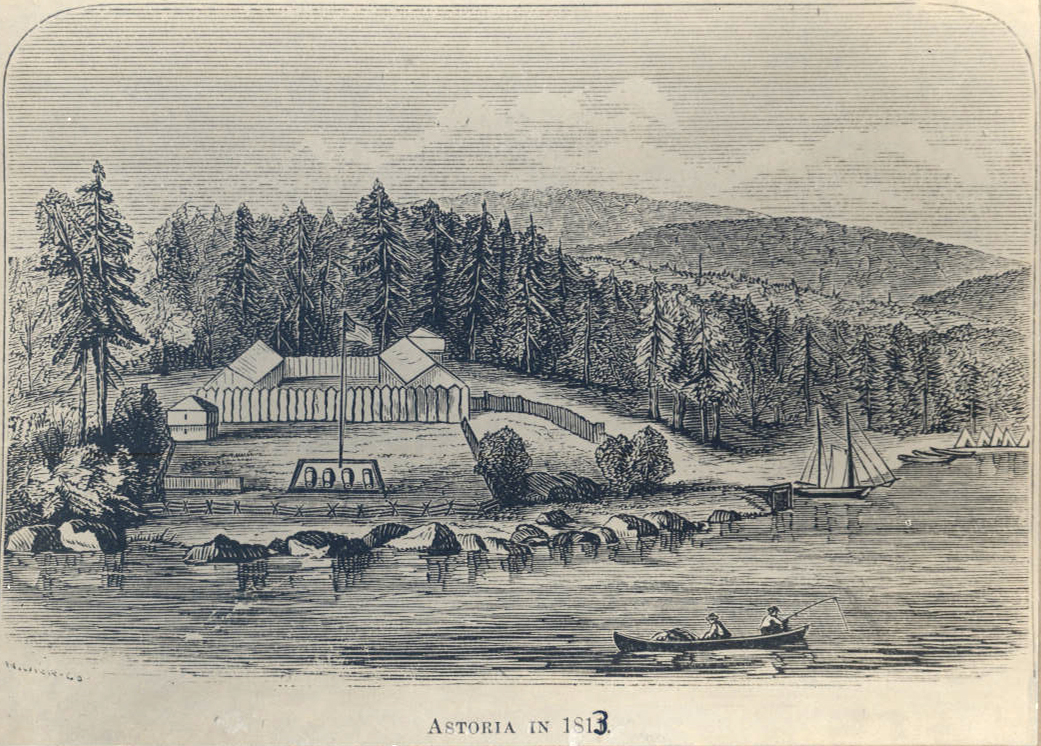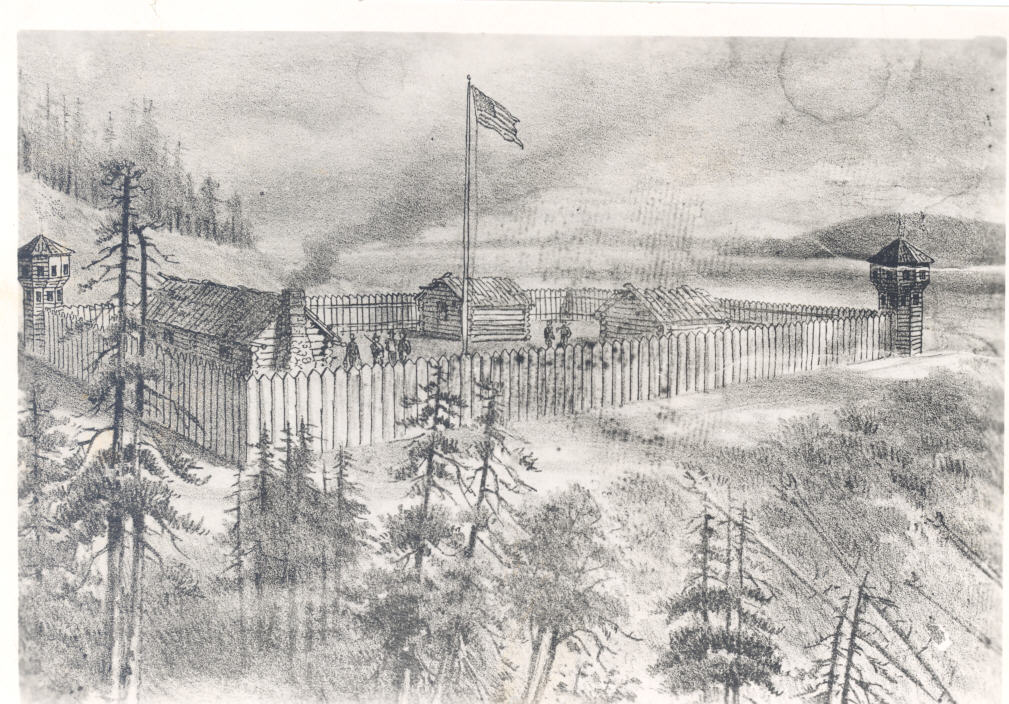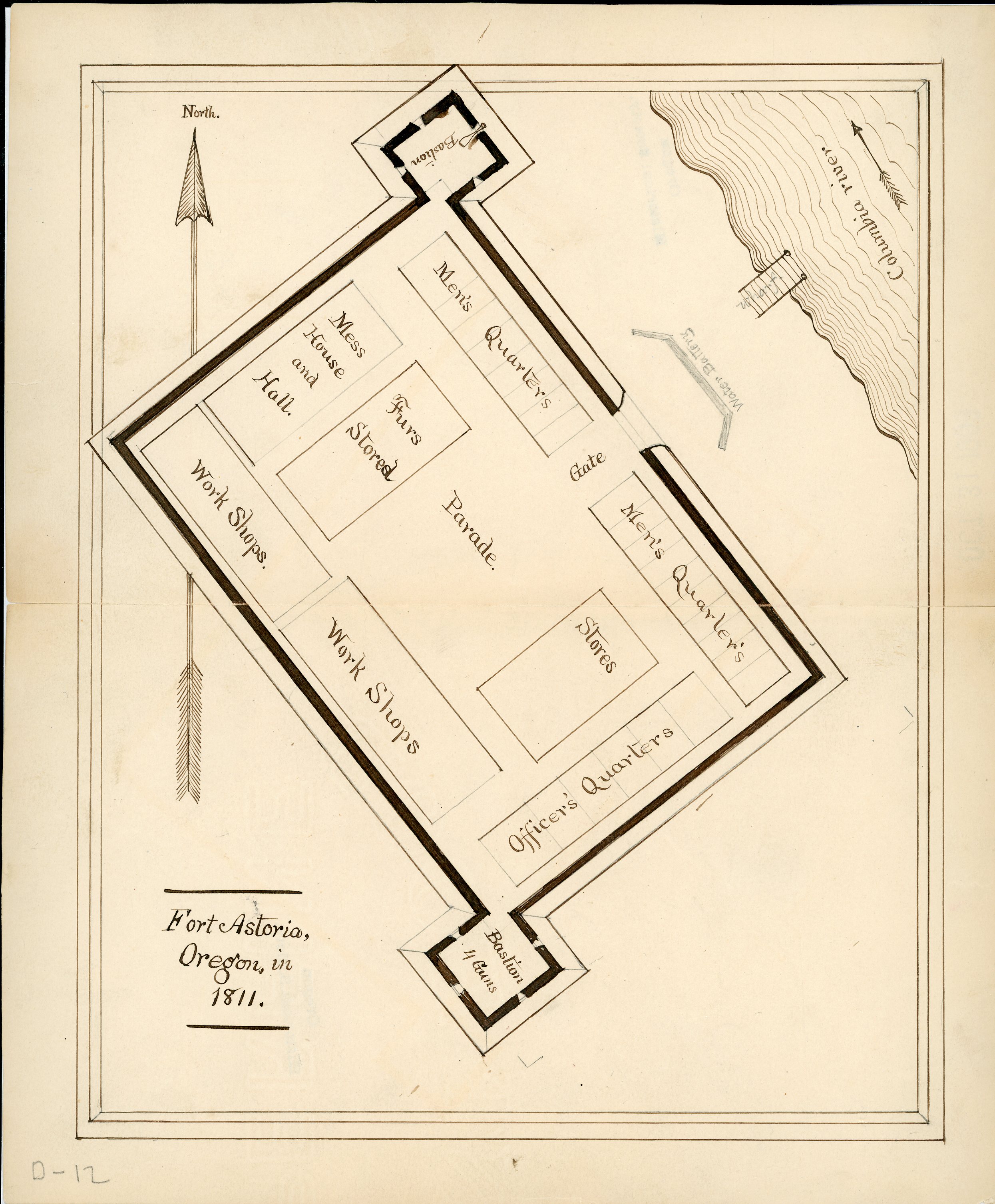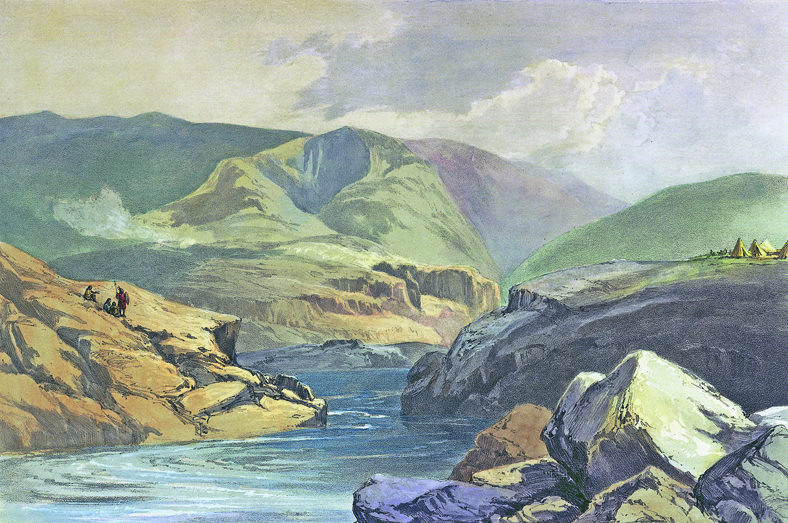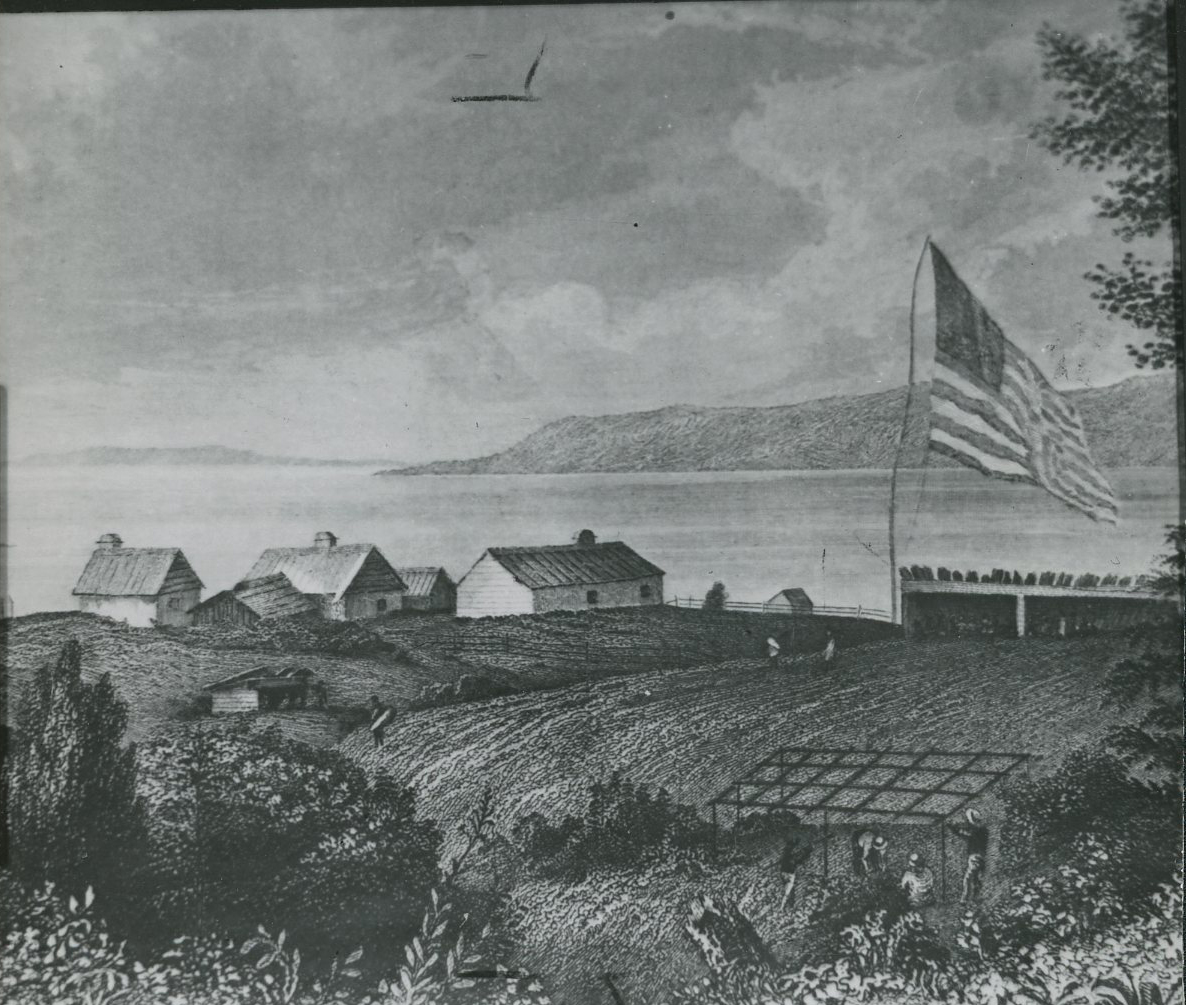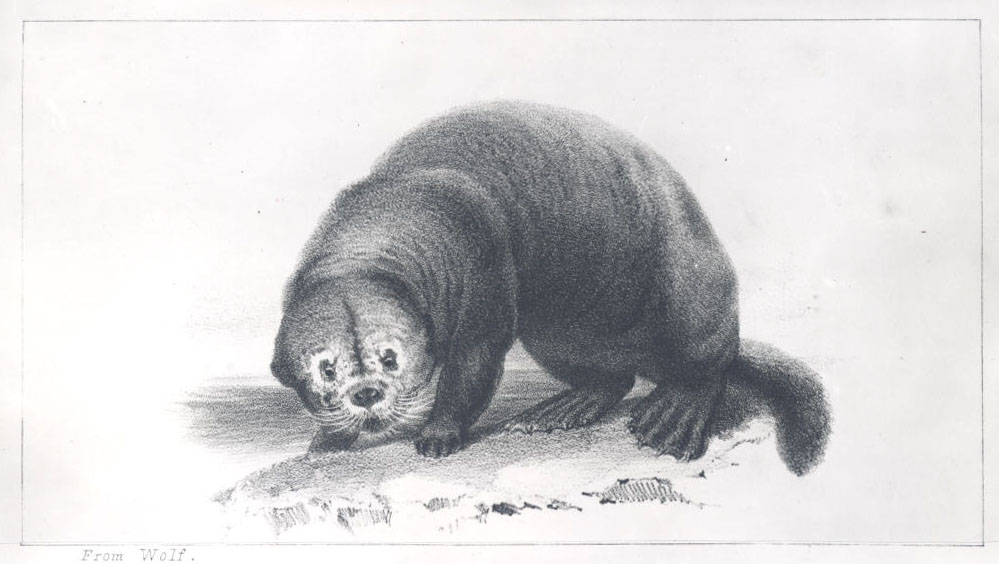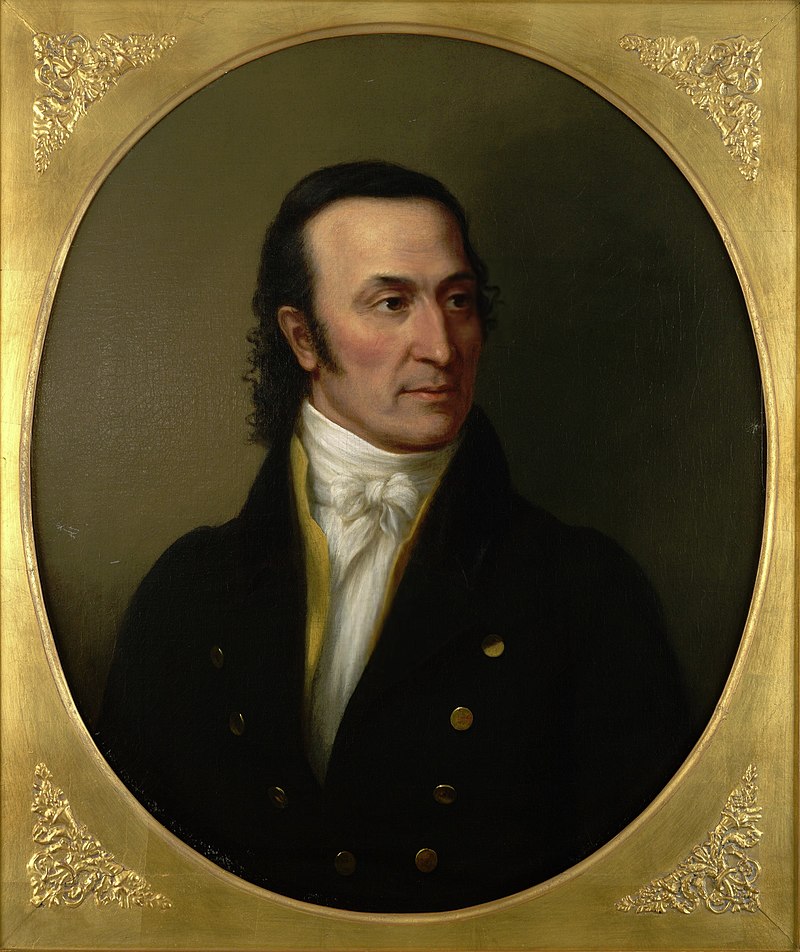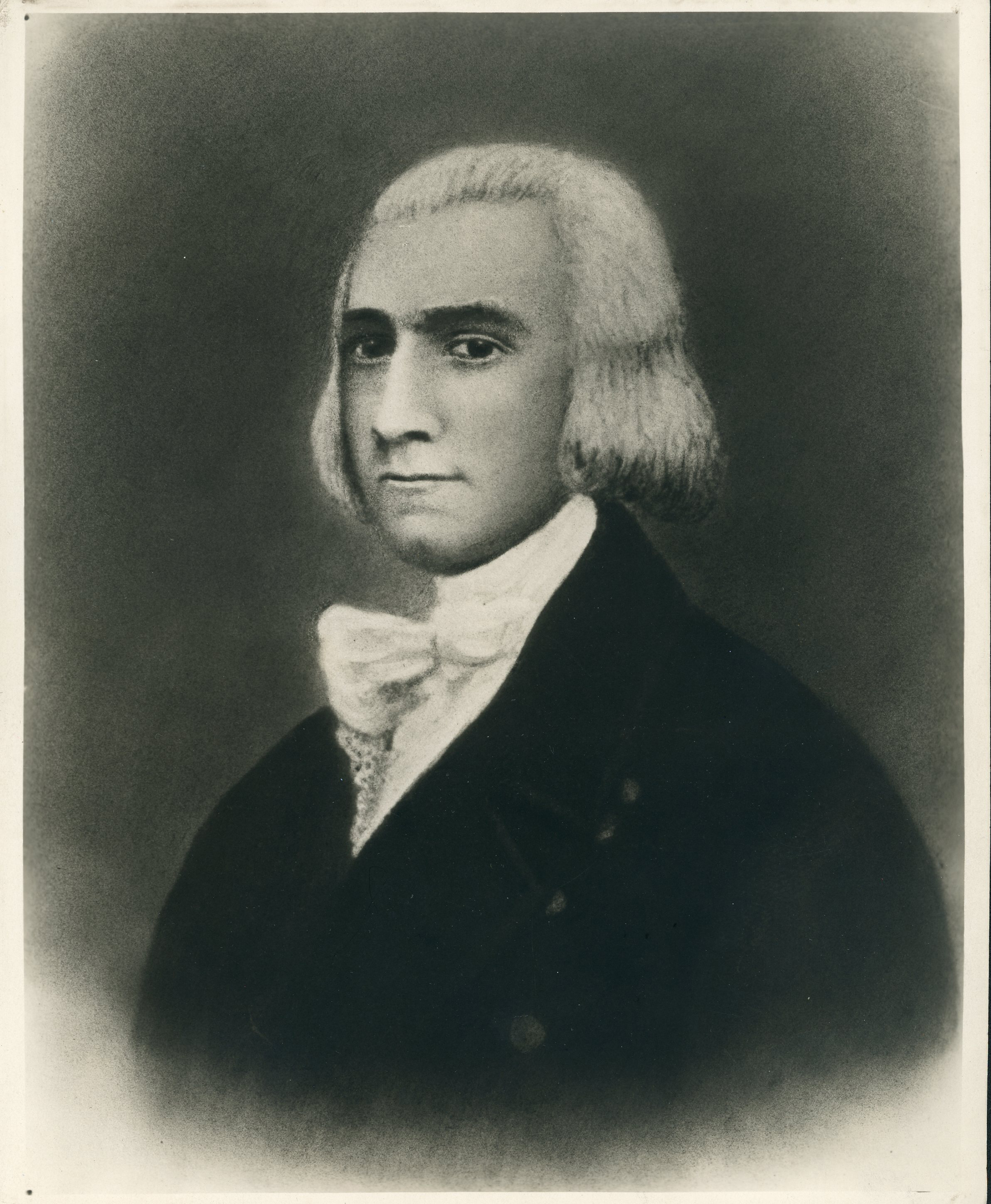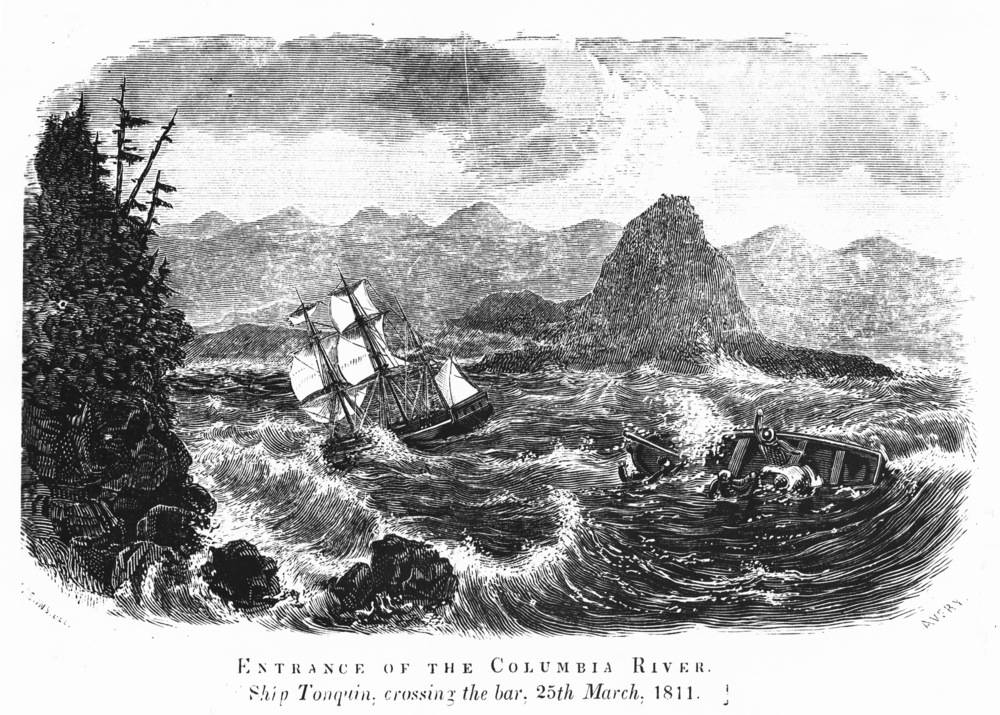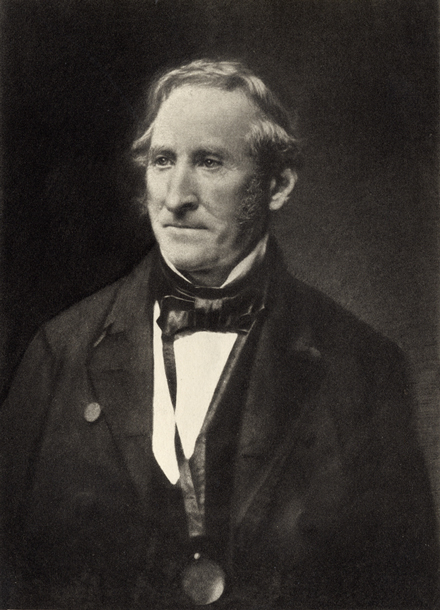Russel Farnham, an American adventurer, explorer, and fur trader, was sent by John Jacob Astor in 1811 to establish Fort Astoria, the first United States settlement on the Pacific Coast. He would later influence legislation that created the Oregon Territory and the State of Oregon. Although he spent just over three years in the Oregon Country, it made a deep and lasting impression on him.
While most accounts of Farnham list his birth as 1784, town birth records for West Springfield, Massachusetts, show that he was born on November 14, 1785. He was the only son of John and Sarissa Farnham, and he had three sisters—Lovisa, Sarissa, and Pamelia.
Farnham joined Astor’s Pacific Fur Company as a clerk in 1810 and arrived at the mouth of the Columbia River on the Tonquin. He helped build the fort in the spring of 1811 and was later sent to trade with the Salish (Flathead) tribe near present-day Thompson Falls, Montana. When control of the fort passed to the British, Farnham and several other stranded Americans left on the brig Pedler with Wilson P. Hunt, who had been in charge of the fort. Farnham served as third officer under Captain Northrop.
At the Russian settlement in present-day Sitka, Alaska, Farnham joined the crew of the Forester under Captain William Pigot and traveled to Kamchatka, Russia. The captain sent him overland to St. Petersburg with the proceeds of the sale of the ship’s cargo of furs. He then traveled back to New York through Copenhagen.
After returning to the United States, Farnham made the acquaintance of Senator Thomas Hart Benton and Representative John Floyd. During the winter of 1820 and 1821, Farnham and Ramsay Crooks, a fellow Pacific Fur Company trader, worked on behalf of Astor’s American Fur Company to lobby Congress for revision of government regulations that circumscribed trading with Natives. Farnham and Crooks stayed at Brown’s Hotel in Washington, D.C., where Benton and Floyd also lodged. They sang the praises of Oregon Country. As Benton later reported, “their conversation, rich in information upon a new and interesting country, was eagerly devoured by the ardent spirit of Floyd. He resolved to bring forward the question of occupation, and did so.”
In 1821, Floyd presented the first report and bill to Congress in support of the United States occupation of the Columbia River, an effort he pursued until 1829. Floyd credited Farnham and Crooks as the source of much of his information.
On October 27, 1829, Farnham married Susan Bosseron in St. Louis. A year later, they had their only son, Charles. While in the fur trade on the Mississippi River, Farnham had been married to Agathe Wood, of the Menominee tribe in Wisconsin; they had a daughter named Mary Ann. Agathe later returned to her home in Prairie du Chien, Wisconsin, where she was known as the widow of Russel Farnham. Their daughter would continue to use the Farnham name until her death in 1886.
Russel Farnham died suddenly in St. Louis on October 23, 1832, an early victim of the first cholera epidemic to hit the United States. His body was buried unceremoniously at night. Due to his sudden death, his estate and landholdings would be caught up in legal battles for years.
-
![Earliest known illustration of Fort Astoria, by Gabriel Franchere, employed by Astor,]()
Fort Astoria, 1813.
Earliest known illustration of Fort Astoria, by Gabriel Franchere, employed by Astor, Courtesy Oreg. Hist. Soc. Research Library, OrHi51
-
![From the West Shore Magazine, 1890]()
Fort Astoria.
From the West Shore Magazine, 1890 Courtesy Oreg. Hist. Soc. Research Library, Orhi691
Related Entries
-
![Astor Expedition (1810-1813)]()
Astor Expedition (1810-1813)
The Astor Expedition was a grand, two-pronged mission, involving scores…
-
![Columbia River]()
Columbia River
The River For more than ten millennia, the Columbia River has been the…
-
![Fort George (Fort Astoria)]()
Fort George (Fort Astoria)
Fort George was the British name for Fort Astoria, the fur post establi…
-
![Fur Trade in Oregon Country]()
Fur Trade in Oregon Country
The fur trade was the earliest and longest-enduring economic enterprise…
-
![John Floyd (1783–1837)]()
John Floyd (1783–1837)
During his service in the U.S. House of Representatives, John Floyd of …
-
![John Jacob Astor (1763-1848)]()
John Jacob Astor (1763-1848)
John Jacob Astor never visited Oregon or the Pacific Northwest, but his…
-
![Pacific Fur Company]()
Pacific Fur Company
The Pacific Fur Company, employee Alexander Ross wrote in 1849, was “an…
-
![Thomas Hart Benton and Oregon]()
Thomas Hart Benton and Oregon
As a newspaper editor and then as a United States senator for Missouri …
-
![Wilson Price Hunt (1783-1842)]()
Wilson Price Hunt (1783-1842)
In 1809, John Jacob Astor selected Wilson Price Hunt to be his St. Loui…
Map This on the Oregon History WayFinder
The Oregon History Wayfinder is an interactive map that identifies significant places, people, and events in Oregon history.
Further Reading
Brand, Frank Erwin. "Russel Farnham, Astorian." Publications of the Illinois State Historical Library 37.
Holt, Orrin S. "Russel Farnham." Journal of the Illinois State Historical Society 9:3 (1916), 284-291.

